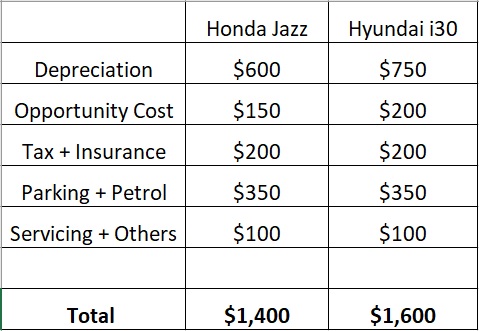In an era characterized by unprecedented technological advancements and global economic interconnectedness, the automotive industry remains a cornerstone of the world’s manufacturing landscape. From the bustling assembly lines of Japan to the sprawling factories of Germany, the production of cars has evolved into a complex and fascinating process. But how much does it actually cost to build a car? This seemingly simple question belies a multitude of factors that influence the ultimate price tag of the vehicles we drive.

Image: www.my15hourworkweek.com
Understanding the intricacies of car production costs not only provides insight into the economics of this vital industry but also empowers consumers with valuable knowledge when making informed purchasing decisions. Join us as we embark on a comprehensive exploration of the various components that determine the cost of a car, from raw materials and labor to research and development.
The Anatomy of Car Production Costs
To fully grasp the cost structure of car production, it is essential to dissect the primary elements that comprise the total expenditure. These include:
Raw Materials: The Foundation of a Car
Raw materials, such as steel, aluminum, rubber, and plastics, form the physical basis of a car. The procurement of these materials and their subsequent transformation into usable components account for a significant portion of the overall production cost. Fluctuations in commodity prices and the geographical location of raw material sources can impact the cost of sourcing these materials.
Labor: The Human Element
The assembly of a car is a labor-intensive process, requiring skilled workers to operate machinery, assemble components, and conduct quality control checks. Labor costs vary significantly depending on factors such as the country of production, labor union agreements, and the level of automation employed in the manufacturing process.

Image: www.iibarizona.com
Research and Development: Driving Innovation
The automotive industry is driven by constant innovation, with manufacturers investing heavily in research and development (R&D) to create new technologies, improve safety features, and enhance vehicle performance. These investments represent a significant upfront cost but are crucial for maintaining a competitive edge and meeting evolving consumer demands.
Capital Costs: The Investment in Production
The establishment and operation of a car manufacturing facility require substantial investments in land, buildings, machinery, and equipment. Depreciation and maintenance of these assets contribute to the overall cost of production.
Other Costs: The Hidden Expenses
In addition to the primary components discussed above, numerous other costs add to the overall price of a car. These include transportation and logistics, marketing and advertising, warranty expenses, and regulatory compliance. While these costs may not be as顯著 as raw materials or labor, they nevertheless impact the final retail price.
Factors Influencing Production Costs
Beyond the fundamental elements of production, various factors can influence the overall cost of a car. These include:
Economies of Scale: The Power of Volume
As with many other manufactured products, economies of scale play a significant role in car production costs. High-volume production allows manufacturers to spread fixed costs over a larger number of units, resulting in lower per-unit costs.
Technology and Automation: Transforming the Process
Advancements in technology and automation have significantly impacted car production. Robots and automated systems can perform repetitive tasks with greater speed and precision than humans, reducing labor costs and improving efficiency.
Globalization and Supply Chains: The Interconnected World
The global nature of the automotive industry has led to complex supply chains, with components and materials sourced from various countries. Currency fluctuations, trade agreements, and geopolitical events can affect the cost of procuring these resources.
The Impact of Production Costs on Car Prices
Ultimately, the total production cost of a car forms the foundation for its retail price. Manufacturers must factor in profit margins, dealer markups, and various taxes and fees to determine the final price tag. Understanding the cost structure allows consumers to make informed decisions when evaluating different car models and negotiating with dealers.
How Much Does A Car Cost To Produce
https://youtube.com/watch?v=b6Q0oQQ1uiI
Conclusion: Empowering Consumers with Knowledge
Navigating the complexities of car production costs provides invaluable insights into the economics of the automotive industry. This knowledge empowers consumers with the ability to make informed purchasing decisions, appreciate the value of their vehicles, and engage in informed discussions about the factors that influence car prices. As the automotive landscape continues to evolve, staying abreast of production cost trends will remain essential for both consumers and manufacturers alike.